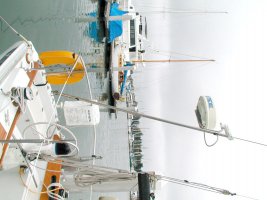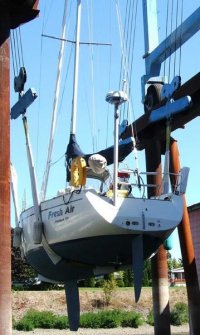ChrisS
Member III
Finished one project and on to another! I'm going to get a Furuno 2KW radar and am debating mounting options. I am debating either the Garhauer pole or Questus backstay mount. This would be for coastal and bay cruising, and if I go the pole route, I may put a solar panel on it.
I know both systems have pluses and minuses--does anyone have any feedback on mounting and/or using either system? I've read the archived posts, but am looking for new perspectives. I'd really like to hear if anyone with a 1970s Ericon was able to configure the backstay mount installation and how they set it up.
I know both systems have pluses and minuses--does anyone have any feedback on mounting and/or using either system? I've read the archived posts, but am looking for new perspectives. I'd really like to hear if anyone with a 1970s Ericon was able to configure the backstay mount installation and how they set it up.



